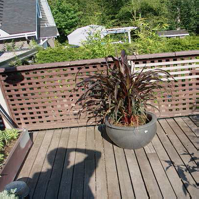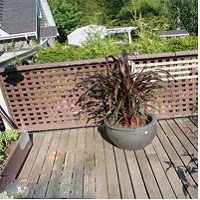Shadow Detection and Removal from RGB Images
Suprotim Majumdar and Harsh Patel
Virginia Tech
Abstract
Teaser figure


Introduction
Recently, a method for removing shadows from color images was developed [Finlayson, Hordley, Lu, and Drew, PAMI2006] that relies upon finding a special direction in a 2D chromaticity feature space. This “Invariant Direction” is that for which particular color features, when projected into 1D, produce a grayscale image which is approximately invariant to intensity and color of scene illumination. Thus shadows, which are in essence a particular type of lighting, are greatly attenuated.
The main approach to finding this special angle is a camera calibration: a color target is imaged under many different lights, and the direction that best makes color patch images equal across illuminants is the invariant direction.
Using a different approach, producing a 1D projection in the correct invariant direction will result in a 1D distribution of pixel values that have smaller entropy than projecting in the wrong direction. The reason is that the correct projection results in a probability distribution spike, for pixels all the same, except differing by the lighting that produced their observed RGB values and therefore lying along a line with orientation equal to the invariant direction.
The approach we have taken involves detecting shadows in the image first and then change the R,G,B values of the pixels such that it is as illuminated as the rest of the image.
Approach
- Convert the image from RGB space to LAB space, where L is lightness component and, A and B are color-opponent dimensions, based on nonlinearly compressed coordinates.
- Then we create a shadow mask by thresholding. If the Lightness Component is within a third of the standard deviation of the mean, then it belongs to the shadow mask.
- We take the input from the user regarding how many shadows the user want to remove.
- Based on the input i.e. number of shadows to be removed, the user is asked to select a shadow region.
- Region Growing is used to get the shadow from the image.
- Then the user is asked to select a small window from the image itself other than the shadow.
Experiments and results
Qualitative results
Conclusion and Future Work
Also, this argument is based on the assumption that there are some chromaticity values captured in the shadow region. If the shadow region is so dark that there are no chromaticity values captured by the camera for that region, there is no way for us to determine what colors are there in the shadow region. In which case the algorithm fails.
References
- Finlayson, Graham D., Mark S. Drew, and Cheng Lu. "Entropy minimization for shadow removal." International Journal of Computer Vision 85.1 (2009): 35-57.
- Finlayson, Graham D., et al. "On the removal of shadows from images." Pattern Analysis and Machine Intelligence, IEEE Transactions on 28.1 (2006): 59-68.
- Finlayson, Graham D., Steven D. Hordley, and Mark S. Drew. "Removing shadows from images." Computer Vision—ECCV 2002. Springer Berlin Heidelberg, 2002. 823-836.
- Drew, Mark S., Graham D. Finlayson, and Steven D. Hordley. "Recovery of chromaticity image free from shadows via illumination invariance." IEEE Workshop on Color and Photometric Methods in Computer Vision, ICCV’03. 2003.
- Xu, Li, Feihu Qi, and Renjie Jiang. "Shadow removal from a single image."Intelligent Systems Design and Applications, 2006. ISDA'06. Sixth International Conference on. Vol. 2. IEEE, 2006.
- Finlayson, Graham D., Mark S. Drew, and Cheng Lu. "Intrinsic images by entropy minimization." Computer Vision-ECCV 2004. Springer Berlin Heidelberg, 2004. 582-595.
- Drew, Mark S., Muntaseer Salahuddin, and Alireza Fathi. "A standardized workflow for illumination-invariant image extraction." Color and Imaging Conference. Vol. 2007. No. 1. Society for Imaging Science and Technology, 2007.
- Finlayson, Graham D., and Steven D. Hordley. "Color constancy at a pixel."JOSA A 18.2 (2001):253-264.
- A Shadow Detection and Removal from a Single Image Using LAB Color Space - Ashraful Huq Suny and Nasrin Hakim Mithila, IJCSI International Journal of Computer Science Issues, Vol. 10, Issue 4, No 2, July 2013
- Simple Shadow Removal - Clement Fredembach and Graham Finlayson, School of Computing Sciences University of East Anglia, Norwich, U